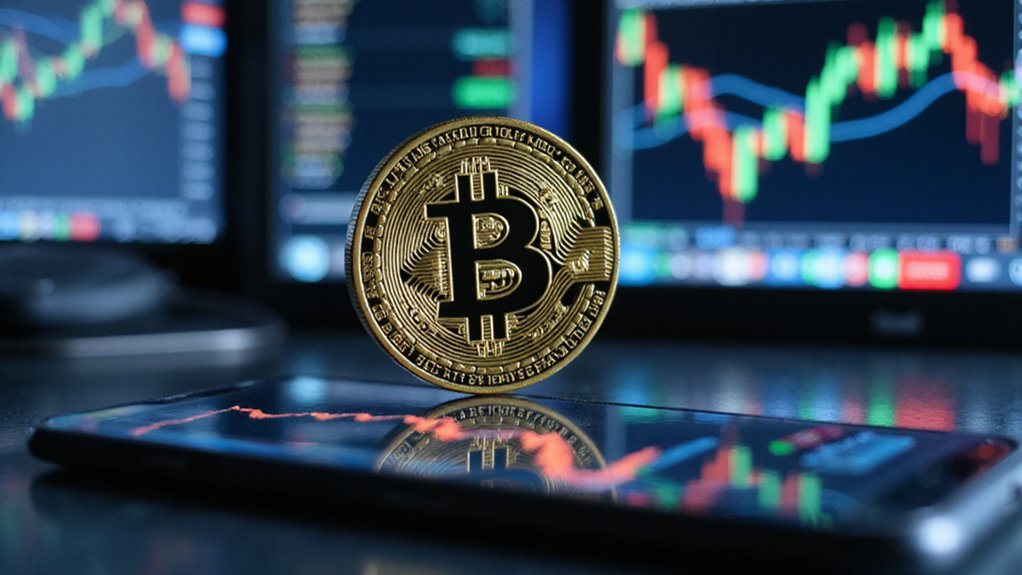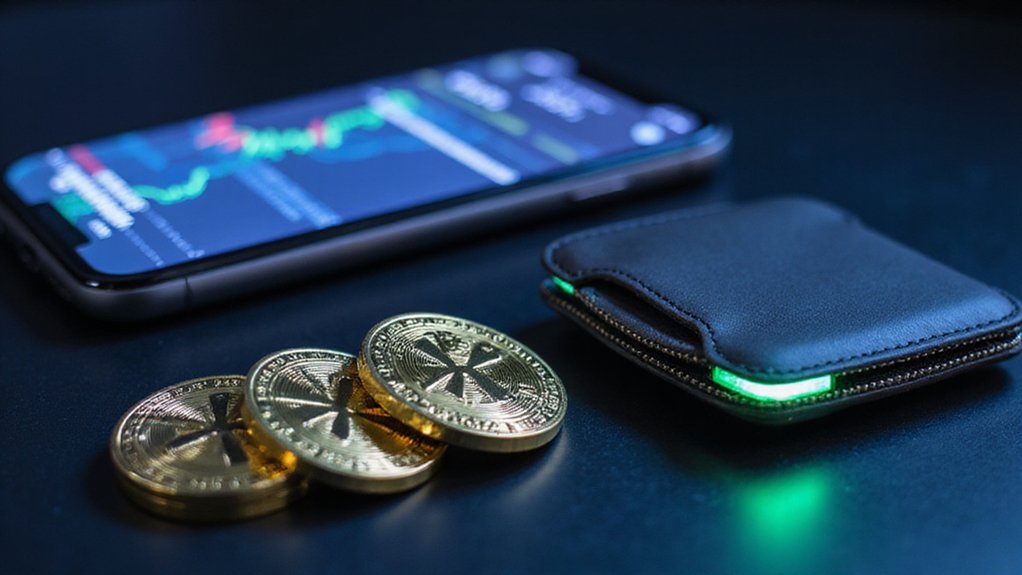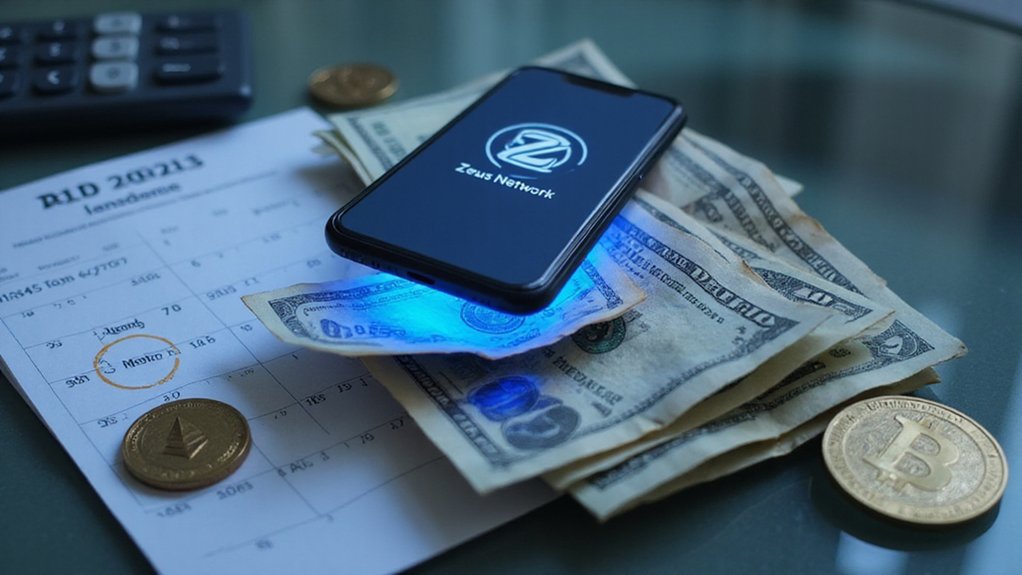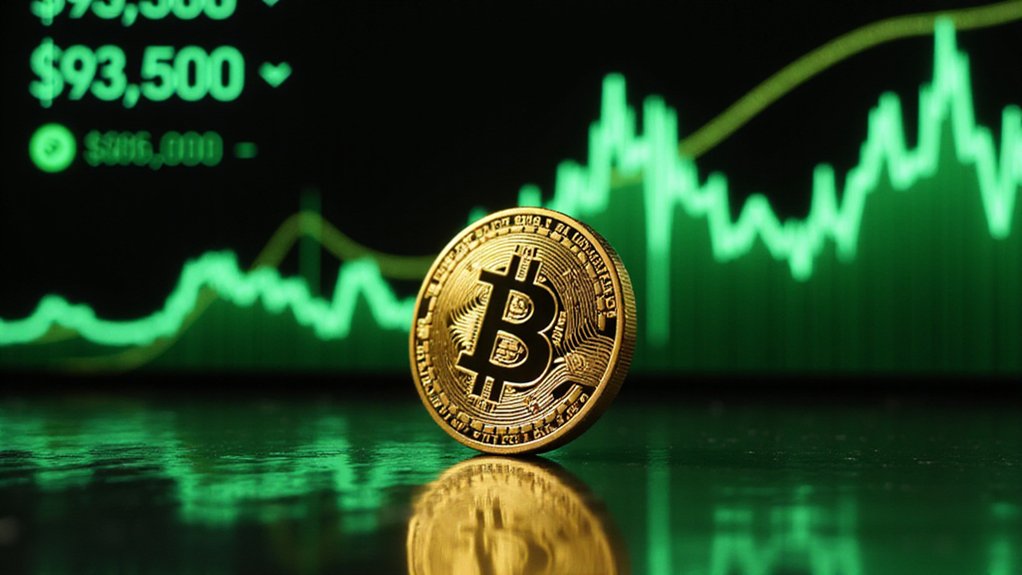Bitcoin currently trades at approximately $85,818, oscillating between $85,000 and $86,000 after recently flirting with the $88,000 threshold. The cryptocurrency—sporting a rather lofty RSI of 72—has demonstrated classic Bitcoin resilience by rebounding from $83,800 earlier this week. With a market capitalization exceeding $1.7 trillion and technical indicators suggesting bullish momentum, traders might witness a $90,000 retest within days (macroeconomic wild cards notwithstanding).
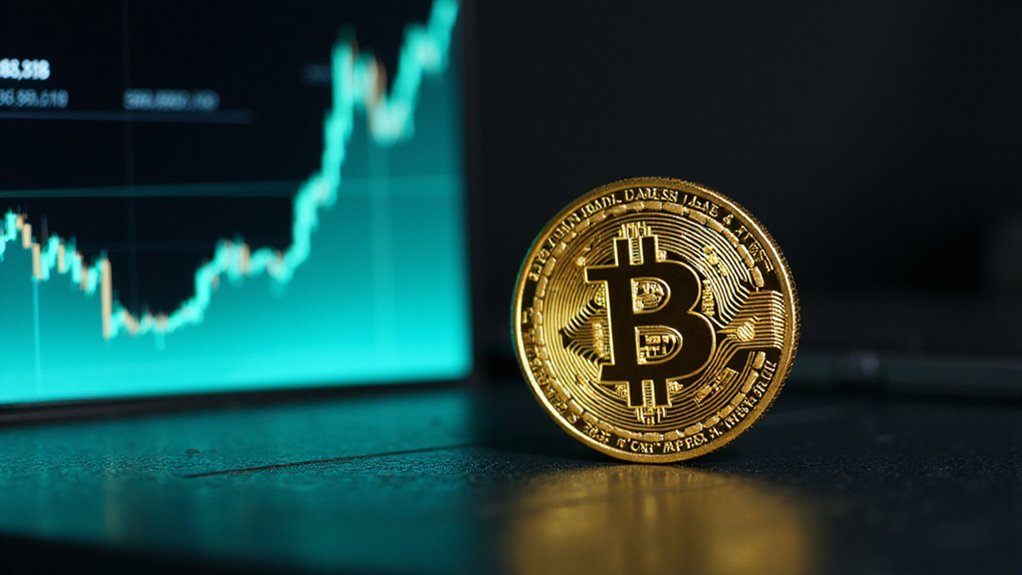
Why does Bitcoin’s price command such rapt attention from investors and casual observers alike?
Perhaps it’s the asset’s notorious volatility or its potential as a harbinger of broader market sentiment.
As of April 19, 2025, Bitcoin trades in the vicinity of $85,818—a figure that, despite its precision, represents merely a snapshot of a rapidly oscillating value proposition.
The cryptocurrency has recently flirted with the $88,000 threshold before retreating to its current trading range between $85,000 and $86,000, demonstrating the market’s characteristic capriciousness.
Bitcoin’s dramatic dance between $88,000 and $85,000 reveals the digital asset’s enduring volatility beneath its maturing veneer.
Technical indicators offer compelling evidence for continued bullish momentum.
The Relative Strength Index registers at 72—territory typically denoting overbought conditions, yet in Bitcoin’s peculiar ecosystem, often sustainable for extended periods before any meaningful correction materializes.
A MACD crossover observed at approximately 10:15 AM EST further corroborates the positive sentiment pervading trading floors (virtual though they may be).
The SEC’s approval of another Bitcoin ETF has catalyzed significant trading activity, with Binance and Coinbase recording volumes of 15,000 and 10,000 BTC respectively during a mere 30-minute window.
Such robust engagement suggests the price movements stem from broad-based participation rather than the machinations of a few whale accounts—a distinction of no small consequence for those attempting to discern sustainable trends from ephemeral fluctuations. This broad participation is particularly noteworthy considering that approximately 2% of accounts control over 92% of the available Bitcoin supply.
While forecasts inevitably diverge, consensus among analysts points to a potential retest of the $90,000 mark within a week, contingent upon maintaining current momentum.
Of course, macroeconomic variables—particularly US-China trade relations—and regulatory announcements loom as perpetual wild cards capable of dramatically reshaping the trajectory.
Bitcoin’s recent climb is part of a recovery pattern, having rebounded from USD 83,800 just days earlier on April 16, 2025.
With a current market capitalization exceeding $1.7 trillion, Bitcoin continues to dominate the cryptocurrency landscape, cementing its position as the leading digital asset.
Bitcoin’s value proposition continues to evolve in this complex interplay of technical signals, regulatory developments, and global economic conditions.
For investors traversing this landscape, understanding that today’s price represents merely one data point in an ongoing narrative may prove more valuable than the specific figure itself.
Frequently Asked Questions
How Do I Safely Store Bitcoins in a Digital Wallet?
Safely storing bitcoins requires implementing multiple security layers in one’s digital wallet.
Users should select reputable wallets (hardware options providing best security), enable two-factor authentication, and generate—then securely store—backup seed phrases.
Regular software updates are non-negotiable.
The prudent investor maintains a diversified approach: hot wallets for transactions, cold storage for substantial holdings.
Public networks should be avoided—one hack can transform a Bitcoin fortune into a cautionary tale overnight.
What Impacts Bitcoin’s Price Volatility on a Day-To-Day Basis?
Bitcoin’s daily price volatility stems from several intertwined factors: trading algorithms executing high-volume transactions in milliseconds; social media sentiment (particularly from crypto “influencers”); liquidity constraints in specific exchanges; institutional investor positioning; and the perpetual tug-of-war between FOMO and FUD.
Regulatory announcements—even minor ones—can trigger cascading effects across global markets.
The relatively modest market cap compared to traditional asset classes means that individual whales can create ripples that would barely register in conventional markets.
How Is Bitcoin Taxed in Different Countries?
Bitcoin taxation varies dramatically across jurisdictions—a financial patchwork that reveals as much about governmental attitudes toward innovation as revenue collection.
High-tax regimes like Japan and Denmark impose burdensome rates (up to 55% and 52% respectively), while crypto havens such as El Salvador, Singapore, and the Cayman Islands offer tax exemptions to attract digital asset investments.
Germany’s approach—taxing short-term trades while exempting holdings beyond one year—represents a nuanced middle ground that acknowledges Bitcoin’s dual nature as both currency and investment vehicle.
Can I Mine Bitcoins at Home With Regular Equipment?
Mining Bitcoin at home with regular equipment has become a quixotic endeavor, akin to hunting whales with a fishing rod.
The network’s exponential difficulty increase has rendered consumer-grade hardware woefully inadequate, with electricity costs invariably exceeding potential returns.
ASICs—purpose-built mining machines—now dominate the landscape, leaving CPU/GPU miners in their dust.
Home miners might consider alternative cryptocurrencies with ASIC-resistant algorithms or joining mining pools, though even these routes offer increasingly diminished prospects for profitability.
What Alternatives to Bitcoin Offer Similar Investment Potential?
Several alternatives offer investment potential comparable to Bitcoin, albeit with different risk-reward profiles.
Ethereum remains the frontrunner with its smart contract capabilities and upcoming scalability improvements.
Solana provides impressive transaction speeds, while Cardano offers a methodically developed ecosystem.
For those seeking established alternatives, Polkadot’s interoperability and XRP’s institutional payment solutions merit consideration.
Even Dogecoin, despite its meme origins, has demonstrated surprising staying power through sheer community enthusiasm—a reminder that market psychology often trumps technical fundamentals.
